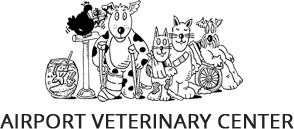
Dog Diarrhea (All You Need To Know)
“What should I do when my dog has diarrhea?”
What’s my next step?
Definitely not onto that area of the lawn or floor.
We will address bloody diarrhea and puppy diarrhea as well.
Diarrhea from a medical point of view
From a medical point of view, the diagnosis of diarrhea in dogs is actually complicated. It is classified under several headings each with their own list of causes or causative agents. However, one thing’s for certain, DIARRHEA IS THE MOST CONSISTENT MANIFESTATION OF INTESTINAL DISEASE. You can take that to the bank. The teller would really be surprised.
To simplify it all a bit we will classify diarrhea as WHAT YOU SEE and WHAT YOU COULD DO and what your vet might figure out to help your dog with diarrhea.
First though a definition, as if you need one. Here it is anyway.
Diarrhea is a change in one or more of the characteristics of the bowel movement: increased FREQUENCY, increased FLUIDITY or increased VOLUME.
It also might be interesting to note that the amount of water in poop may not change significantly from being relatively solid to the liquid stool we commonly call diarrhea. ( Normally 60-80%. Diarrhea 70-90%).
Diarrhea from a really, really technical view (but don’t worry the straight poop is coming!)
Getting a bit technical if your interest in poopies shoots way beyond the ordinary load, hold your nose and wait to read about several mechanisms: 1. Osmotic content of the stool, 2. Intestinal hypersecretion, 3. Altered mucosal permeability, 4. Deranged motility.
That information is at the very end (so to speak) of this blog. And that’s because right now, we gotta go (so to speak) on, and you can only hold your nose for so long.
Differentiating between LARGE and SMALL INTESTINAL diarrhea is necessary. You’ll discover why as you read on. Unless the idea of reading all about poop is increasingly repulsive. Then just skip to WHAT TO DO.
LARGE INTESTINAL DIARRHEA
IF YOU SEE some or nearly all of this: your pooch is straining, mucous, some blood, frequent pooping, painful or difficult defecation (dyschezia) still active and chasing squirrels, may vomit, asking for the keys to the car along with your credit card, no or minimal weight loss: Then, with obvious exceptions, they can indicate LARGE INTESTINAL diarrhea.
SMALL INTESTINAL DIARRHEA
IF YOU SEE some or nearly all of this: increased frequency, increased volume, very loose to liquid number two, bloody poop, dark to black color, less active to down and out, refusing the car keys, ignoring the tennis ball, vomiting, stinky body odor, reduced appetite, weight loss: Then this can indicate SMALL INTESTINAL diarrhea.
With both LARGE or SMALL INTESTINAL DIARRHEA:
YOU MIGHT SEE salivating, shivering, hiding.
YOU MIGHT HEAR belly rumbling, burping, flatulating.
YOU MIGHT SMELL bad breath.
DIARRHEA FROM other ORIGINS
But wait! There’s more! You might see loose poop but the cause may NOT be of gastrointestinal origin. Yes of course it emerges or explodes from the butt hole, butt the reason for this diarrhea might be, say, liver disease (or in cats, hyperthyroidism). You are, like, seeing a secondary symptom. Hey. No prob.
NO DIARRHEA but still INTESTINAL DISEASE
Here’s a zinger to blow you away: The ABSENCE OF DIARRHEA does not preclude intestinal disease. Just when you thought all this was making sense. Ugh!
WHAT YOU CAN DO
If your dog is fine otherwise there are certain dietary changes and drugs that may prove useful:
DIETARY CHANGES: The purpose is not to sample something different today, like sushi or bologna. It’s to rest the gut. That means bland, easily digestible, low-fat food given in small amounts frequently over the course of a week or two and then, if the diarrhea resolves, gradually start introducing the regular diet, like sushi or bologna if that’s his regular diet, over the course of another week or two. Please transition slowly. We are trying to eliminate the runs, not maintain it.
HOME REMEDY FOR DOG DIARRHEA
BLAND usually means boiled WHITE RICE (not minute or wild or brown or fried) with LOW-FAT COTTAGE CHEESE or TOFU. (boiled hamburger or boiled chicken breast are not as highly recommended alternatives.).
*One cup dry white rice, cooked, cooled, with 4 oz low fat cottage cheese or tofu has 820 calories and maintains a 25 lb. dog.
Pepto Bismol. My personal favorite. Pink. Soothing. Stains white carpets.
ELECTROLYTE replacement. To a quart of water, add one bullion cube and two tablespoons sugar. Provide in small amounts either as liquid or ice cubes. A separate bowl of plain water can also be offered.
WHAT DR. JAY SAYS ABOUT USING ANTIBIOTICS …
Antibiotics are listed only because they are typically harmful when used to treat symptomatic diarrhea. They are primarily aimed at protecting a septic patient, one showing fever, depression, and severe hemorrhagic diarrhea. Moreover, only particular antibiotics should be used.
MONITOR YOUR PET’S PROGRESS
Please monitor your pet’s progress and control his environment. He’s basically grounded for his course of treatment. Being sick sucks.
IF YOUR DOG DOES NOT SEEM WELL
ALARM! Code! Loud offensive music!! If your dog does not seem well, like anorexic, regardless of his symptoms and regardless that he seems chill right now, that dog needs to be seen by a vet. Like immediately, dude. No, not tomorrow or after the game.
If your dog is on MEDICATION, that medication can be suspect as a cause or possibly intensifying the diarrhea. Therefore certainly do not add medication. Instead inquire what drugs need to be reconsidered.
Most pet owners with WHITE CARPETS see the vet immediately. Those who don’t will often wait. Which one are you? (Just playing with your head. Sorry.)
If you have decided to bring your dog to the doctor above is what the doc might refer to in order to determine SMALL or LARGE INTESTINAL diarrhea. Butt also to determine whether your pet’s condition is ACUTE or CHRONIC.
Yup. Tossed in another classification.
ACUTE DIARRHEA
Acute does not describe how adorable your pooch is.
ACUTE means it occurred abruptly in a previously healthy dog, and is typically of short duration. That is, less than two weeks, or intermittently for less than a month, unless you have WHITE CARPETING in the living room. Then it’s that morning.
ACUTE: YOU MIGHT SEE: profuse, watery diarrhea, associated vomiting, flatus that could clear a room and peel paint, belly gurgling like this: gurgle. Gurgle. Brrr. Plink plink plink. Gurgle. You might ask, Is that the dog making those sounds, honey? Or is it you? Note that the combination of vomiting and diarrhea can be exhausting in the short term, and life threatening if improperly treated. Hint hint.
CHRONIC DIARRHEA
CHRONIC. Present continuously or intermittently for at least 2-4 weeks and has not responded to symptomatic treatment along with a pattern of recurrences.
CHRONIC. YOU MIGHT SEE in addition to diarrhea, a distended belly. If you push that belly you might get the impression of a water balloon. That’s not normal.
Mucus, black color, increased appetite, straining to poop.
PUPPY DIARRHEA
PUPPIES with diarrhea have their own set of questions:
- Has he been exposed to other dogs?
- Does he find stupid stuff to ingest? Like garbage. Your lost sock. Medicine.
- Have you fed him stupid stuff, like pepperoni from the pizza? Really?
- Is he fully vaccinated?
- Is he a pet shop or animal shelter adoption?
REMEMBER to bring in a POOP SAMPLE to your appointment for testing.
(Fresh poop is best. Only about the same volume as the nail joint of your thumb. That’s actually all we need. This is a case where more is not better. However, although these tests may reveal parasitic ova, a dilute feces may deliver a false negative result.)
THE VETERINARY OFFICE EXAM
THE DOCTOR will examine your pet concentrating on feeling the abdominal cavity. The stomach and pancreas are located just behind the ribs and under them. He will PALPATE for tenderness and watch to see if your dog tries to bite him (hopefully without success). He will squeeze your pet’s belly to feel for enlargement of loops of the intestine with fluid or gas. Or thickening. Or bunching. Or a sausage shaped mass. Or any mass at all. Or enlarged lymph nodes. Or a foreign body. Or a growl or sharp look of irritation from your usually tolerant and cooperative doggy.
Additionally, he will INSPECT his mouth, checking gum moisture and color and response to pressure, check his heart rate, eyes if sunken, skin if tents, hair coat if poor quality, and take his temp. He may also put a gloved and lubricated finger UP THERE checking for blood and the character of the poop as well as neighboring structures.
He might recommend a blood test checking for anemia infection dehydration liver and kidney values electrolytes. Also, urinalysis fecal exam and special testing too.
Additionally an x-ray and ultrasound and even exploratory surgery might be on that unhappy list as well.
Going home or staying the night. The diagnosis informs the treatment. That sounds so cool. THE DIAGNOSIS INFORMS THE TREATMENT.
Below is a short list of different diseases that share a symptom, namely, you guessed it, diarrhea:
DIFFERENTIAL DIAGNOSIS: A short list
- Your puppy might need worming medicine for intestinal parasites.
- Your puppy might require intravenous fluids for severe viral gastroenteritis, like Parvovirus.
- Your young Labrador Retriever might still be interested in swallowing stupid stuff.
- Your Boxer might have Histiocytic Ulcerative Colitis.
- Your Collie might have Exocrine Pancreatic Insufficiency.
- Your Shar pei might have Lymphocytic Plasmacytic Enteritis
- Your German Shepherd might have Eosinophilic Gastroenteritis
- You might be feeling nauseous right now and need to excuse yourself
- Your cute Yorkie might have Protein Losing Enteropathy.
- Your little Poodle might have Hemorrhagic Gastroenteritis and be hospitalized.
- The old dog the street over might have intestinal cancer.
- Your Basenji might have Immunoproliferative Small Intestinal Disease
- Your Rottweiler might have Lymphangiectasia
- Your darling dog of mixed ancestry probably does not have Bacterial enteritis.
- …but you know, I could be so wrong.
THEY ARE ALL DIFFERENT DISEASES THAT SHARE A SYMPTOM
As promised, we’ll briefly discuss these somewhat complicated and confusing mechanisms causing diarrhea. These mechanisms may occur concurrently.
MECHANISMS CAUSING DIARRHEA. GETTIN’ DOWN WITH IT.
OSMOTIC DIARRHEA: The amount of unabsorbed osmotically active solutes increases fecal water. This can result from OVEREATING, even a regularly fed diet, sudden dietary CHANGE, MALDIGESTION from Stomach disorder, MALABSORPTION from Pancreatic deficiency, Bile deficiency, Small Intestinal Lining disorders.
HYPERSECRETION: Intestinal secretion is normally exceeded by reabsorption of secreted fluid and electrolytes. Otherwise when reabsorption is reduced, a marked increase in fecal water results. Among the many causes can be enterotoxigenic BACTERIA, CANCERS, INFLAMMATION, MEDICATIONS, MALABSORPTION from increased bile and certain fatty acids, THYROID disease.
ALTERED PERMEABILITY: damage to the gut wall, particularly tight junctions in the upper small intestine, can produce the exudation of fluid containing considerable quantities of electrolytes, plasma proteins and blood cells which are lost in passage. Electrolytes are lost first. Then plasma proteins. After that, red blood cells. Not only compromised epithelial cells, but defective immune function in the intestinal wall and liver permit excessive macromolecules entrance into the body. Not good, bro.
Causes include EPITHELIAL EROSION or ULCERATION, INFLAMMATION, CANCER, INFECTION, TOXINS, DRUGS, STOMACH LIVER KIDNEY diseases, CIRCULATORY diseases. Complications of Inflammatory Bowel Disease, Glutin-induced enteropathy and soy and milk protein intolerance is mucosal inflammation which results in intestinal epithelial permeability.
ALTERED MOTILITY: ordinary gut movements are rhythmic contractions or segmentations, and peristalsis. Their strength is greatly reduced in diarrhea, the gut becoming a flaccid tube whose contents are poorly absorbed and more rapidly flow out. This also may predispose the intestinal tract to bacterial overgrowth. With COLITIS, the inflammatory process compromises the reservoir function of the large bowel. Also, particularly in cats, the early segment of the large bowel’s gradient of motility is normally reversed, retaining its contents until reabsorption is completed. This is lost during colitis. Diseases may include INFLAMMATION, PARASITISM, CANCER, INFECTIONS, MALABSORPTION, THYROID and other ENDOCRINE tumors.
So there was the straight poop. Hope it all work out well.



